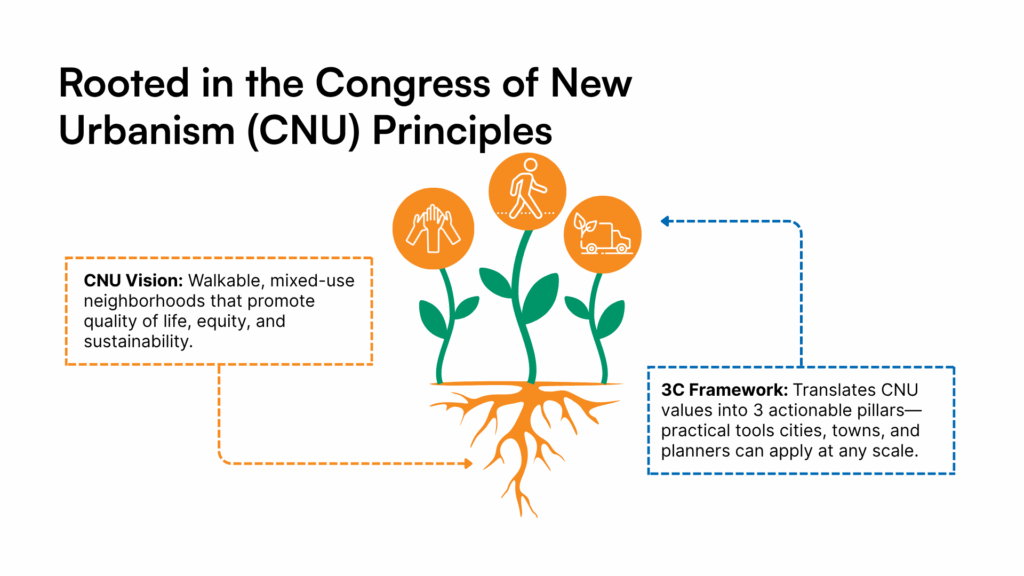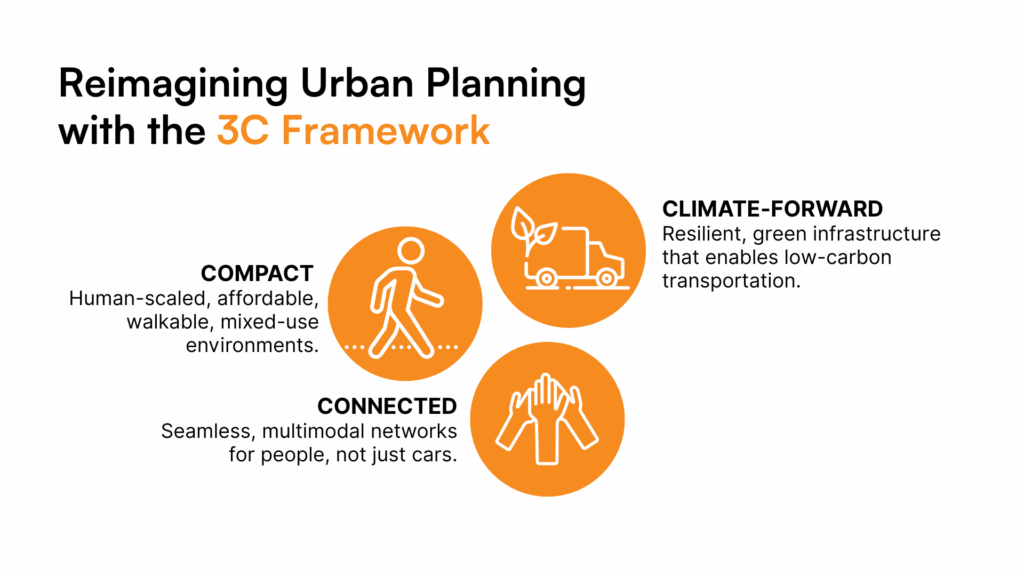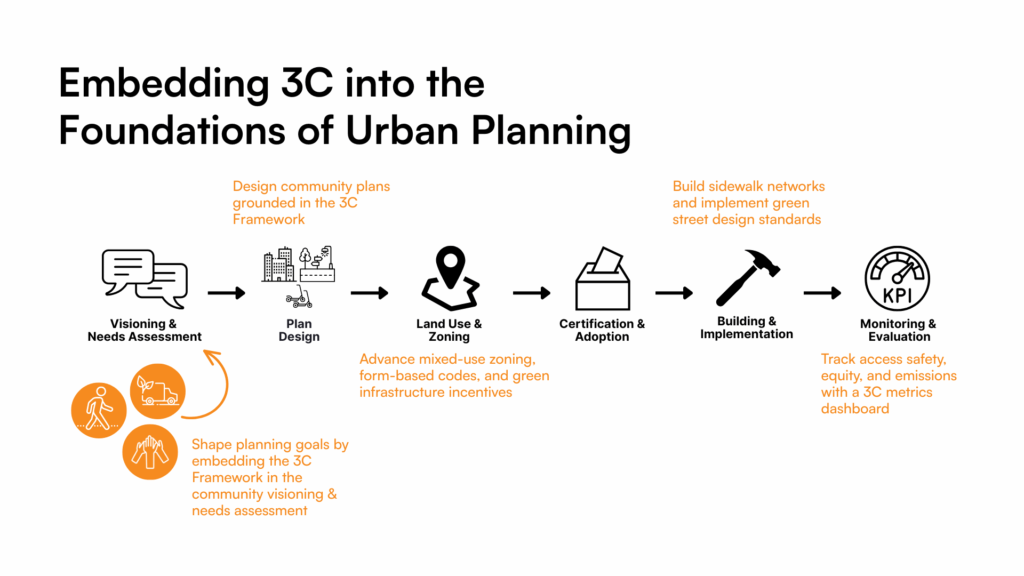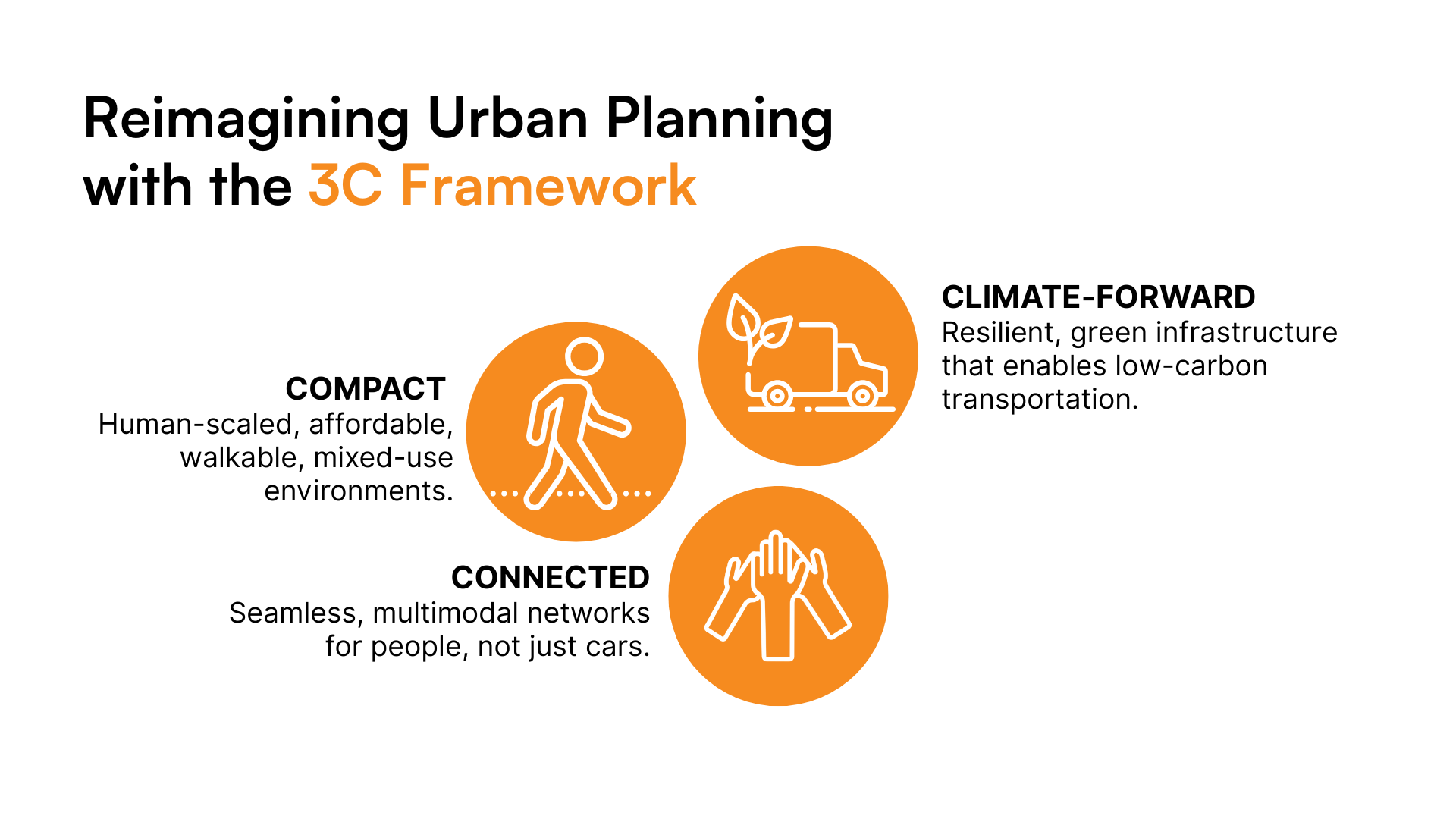By: Moe Magali
Walkability has long been a hallmark of great urban design. But in today’s climate, it’s more than just an amenity—it’s a strategy for equity, a lever for public health, a pathway to climate resilience, and a driver of economic vitality.
At Public Works Partners, I’ve seen how communities flourish when walkability is built into the foundation of planning rather than treated as an afterthought. At Public Works Partners, I’ve seen how communities flourish when walkability is built into the foundation of planning rather than treated as an afterthought. That’s why we use the 3C Framework for Walkability: Compact, Connected, and Climate-Forward. It’s more than a slogan — it’s a practice-oriented model that helps communities translate vision into real, implementable change. Rooted in the values of the Congress for the New Urbanism (CNU), the framework distills principles such as human-scale design, mixed-use development, and green mobility into a practical tool that municipal agencies, developers, and community leaders can effectively apply.

Where traditional planning frameworks often separate land use, mobility, and environmental goals into distinct silos, the 3C Framework emphasizes that these elements must work together as an integrated system. Compact growth isn’t enough if neighborhoods aren’t connected. Connectivity isn’t meaningful if the infrastructure can’t withstand climate shocks. And resilience falls flat if residents don’t have safe, local access to the essentials of daily life. By weaving all three principles together, the 3C Framework helps ensure that planning outcomes are coherent, inclusive, and future-ready.
What the 3C Framework Means

Before diving into the details, it helps to pause and ask: What does it actually mean to design for walkability today? The 3C Framework answers that question with three simple but powerful principles.
Compact communities make daily life accessible. Schools, shops, parks, and homes are all within easy reach, creating lively streets and human-scale design that encourage activity and connection.
But compactness alone isn’t enough. Communities must also be Connected through safe, continuous networks of sidewalks, intersections, and multimodal links. This allows people to move freely by foot, bike, wheelchair, or transit.
Finally, walkability must be Climate-Forward. Streets should be designed not only for access today but for long-term resilience. That means tree canopy for shade, stormwater-absorbing green infrastructure, and car-light zones that reduce emissions and protect against extreme heat and flooding.
Together, these principles move walkability beyond a design feature and turn it into a comprehensive strategy for building healthier, more equitable, and future-ready places.
How to Put 3C Into Practice

The 3C Framework isn’t a checklist. It’s a mindset shift. It reframes planning around three essential questions:
- Are we making it easy to live locally (Compact)?
- Are we removing barriers to movement for all users (Connected)?
- Are we designing for tomorrow’s realities, not just today’s conditions (Climate-Forward)?
When applied consistently, 3C transforms how projects are scoped, designed, and funded. Visioning sessions shift to focus on neighborhood access, not just land use. Zoning codes prioritize active ground floors and infill, not parking minimums. Infrastructure investments focus on continuous networks, not isolated fixes. Engagement efforts surface lived experiences—where the sidewalk ends, where shade is lacking, and where access is inequitable—and directly link those to climate resilience strategies. Over time, 3C becomes institutionalized, guiding budgets, policies, and design standards.
Why This Matters
Communities that adopt the 3C Framework don’t just become more walkable. They become healthier, safer, more equitable, and economically stronger. They build places that attract investment while reducing emissions and mitigating climate risk. And most importantly, they send a clear message: this place is designed for people, not just cars.
At Public Works, we view 3C as a repeatable and adaptable model that can be applied across various scales—whether you’re revitalizing a downtown corridor, developing a comprehensive plan, or creating a safety strategy for suburban streets. The principles are universal; the applications are local.
Let’s Build Walkability That Lasts
If you’re ready to translate your community’s values into resilient infrastructure and policy, the 3C Framework for Walkability is your guide. Let’s work together to make streets smarter, neighborhoods stronger, and cities more resilient—starting from the sidewalk up.
Reach out to me and the Public Works Partners team to bring the 3C Framework to your next project.





